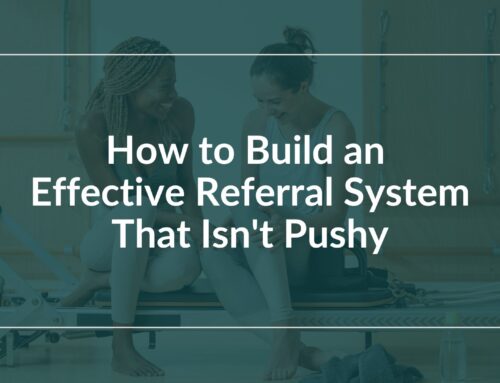In the competitive and evolving wellness industry, your instructors are the bridge between your studio’s vision and your clients’ success. When you invest deliberately in Pilates instructor training and ongoing development with us at PEI, you’re not just supporting individual teachers; you’re lifting your entire studio’s standards, reputation, and bottom line.
The Rising Demand for Pilates Classes
A 2025 industry survey shows that 77% of Pilates studios are growing and 67% are regularly selling out classes. Meanwhile, many Pilates studio owners report that acquiring qualified instructors is one of their biggest challenges. Nearly 40% said they needed more instructors, and 30% were actively hiring. This points to a market that is ripe for differentiation and leadership.
When a Pilates studio positions itself as a magnet for excellent teachers by offering education, mentorship, and growth, it gains a competitive edge. But that only works if the investment is real, strategic, and continuous.
How Instructor Education Upgrades Individual Teaching
1. Deeper technical skill, better client outcomes
A robust Pilates teacher training program gives instructors a comprehensive foundation in anatomy, biomechanics, movement analysis, and cueing techniques. With that deeper knowledge, instructors can more safely adapt exercises, spot compensation patterns, and fine-tune progressions for clients. That leads to better results and stronger client trust and retention.
2. Confidence and clarity in teaching
Many emerging instructors feel uncertainty about how to cue, how to adjust, or whether they’re “doing it right”. Ongoing education gives them clarity, fresh perspectives, peer feedback, and a framework for decision-making. As they grow more confident, their presence in class becomes more effective and inspiring.
3. Keeping up with science, trends, and best practices
Exercise science, rehabilitation protocols, and client expectations evolve over time. Continuing education helps instructors stay current with new findings, tools, and approaches, ensuring they teach safely and effectively. For example, innovations in reformer design or insights about connective tissue loading might influence how you teach certain movements. Without refreshers, instructors risk becoming stagnant or outdated.
4. Peer connection and retention
Teaching can become isolating if not purposefully supported. When instructors are encouraged to attend workshops, observe peers, or co-teach, they feel part of a community of growth. That reduces burnout and supports longevity, which in turn stabilizes your staffing.
How Pilates Instructor Development Lifts the Whole Studio
1. Elevated client experience and improved brand reputation
Every client interacts with your instructors. When your team is sharper, more responsive, and more confident, the perceived quality of your studio goes up. Word-of-mouth referrals, client retention, and your brand’s prestige all benefit. Better instructors equal a better customer experience!
2. Uniform quality and consistency
A studio without consistent teaching styles, cueing systems, or approaches can feel disjointed. When all instructors pass through a shared education pathway, even if they bring personal flair, you gain consistency in language, technique, and class flow. That consistency strengthens your systems and client trust.
3. Internal capacity for growth and specialization
When instructors are deeply trained, they can branch into specialty niches such as rehab clients, pre/post-natal, athletic clientele, etc. They can lead workshops or contribute to curriculum development. This means your studio doesn’t always need to depend on external hires for new offerings. You can build from within.
4. Lower turnover costs
Hiring, onboarding, and training a new instructor is expensive in time, money, and client experience. Pilates studios that support instructor education tend to foster loyalty. Instructors who feel invested in their work, the studio, and their clients are more likely to stay, reducing churn and preserving the client base.
Overcoming Common Barriers and How to Structure Your Investment
Time and scheduling
Build education time into instructor schedules. Offer hybrid workshops, micro-learning modules, or in-house labs where teachers can try new material in a lower-stakes setting.
Cost
View education as strategic capital rather than overhead. You might subsidize part of the cost, or offer revenue-sharing on workshops that instructors lead. Also, if your studio runs its own teacher training with us at PEI, see it as an asset rather than a profit center.
Instructors resistant to change
Frame education as growth, not criticism. Celebrate “wins” from implementing new techniques, spotlight instructor-led learnings, and anchor the culture around curiosity and continuous learning.
Our Final Thoughts
Investing in Pilates instructor training isn’t a line item in your budget. It’s a strategic lever that lifts your entire studio. When individuals deepen their skills, confidence, and adaptability, the studio wins through consistency, retention, reputation, and internal growth potential.
If you’re a studio owner or leader, consider developing a phased education roadmap: onboarding, intermediate skills, specialization labs, and mentorship. Track metrics like instructor retention, class fill rates, client feedback, and internal promotions.
Ready to design that roadmap? Or do you want help integrating training into your Pilates studio culture? Reach out now – we’d love to share more about how the Pilates Education Institute supports the Pilates method with a comprehensive teacher training program.





